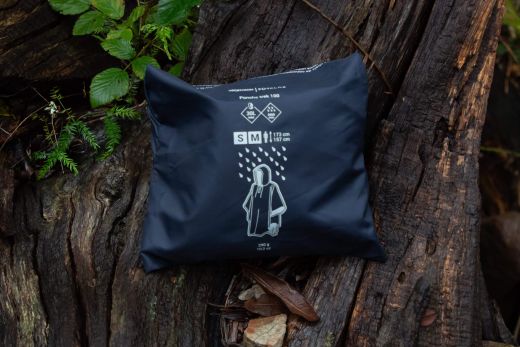If you’re planning a hike somewhere that’s frequently quite wet and you don’t already own rainwear, you’re probably wondering whether you should get a rain jacket or poncho. Both have their merits, but with different pros and cons, you can expect a jacket to perform better in certain conditions and a poncho in others. In this article I look at these differences in breathability, weatherproofness, durability, fit, and cost so that you can make a more informed decision about wet weather gear ahead of your trip.
Note: This is just one article in a whole series on how to choose rainwear and outer layers. If you haven’t already read the introductory article on how to layer outdoor clothing or my guide on how to choose a rain jacket, you might want to read these next.
What is a rain jacket?
Waterproof jackets typically fall into one of two categories: hard shells and rain shells. Hard shells, with their 3-layer construction, offer the best combination of breathability, waterproofness, and durability, but they aren’t cheap or particularly light. Rain shells, on the other hand, typically use a 2-layer construction (missing the inner liner found in hard shells) to cut weight and cost, and they can vary in terms of weatherproofing depending on their intended use. Lighter jackets, like those designed for running, are typically less waterproof and can wet out in sustained or heavy rain, while thicker rain shells are as waterproof as a hard shell. In this article, I will compare ponchos to hard shells and the more waterproof type of rain shell.
What is a poncho?
A rain poncho is a rectangular piece of waterproof fabric or plastic with an opening at the top for your head, a hood to cover it, and sleeves. Taking a one-size-fits-all approach, ponchos are designed to fit loosely with most being long enough to cover the average hiker’s upper legs. Beyond that, coverage can vary. Some have full-length sleeves while others only elbow length sleeves. Most are designed to cover only the wearer, but a few are designed to go over both the hiker and their backpack.
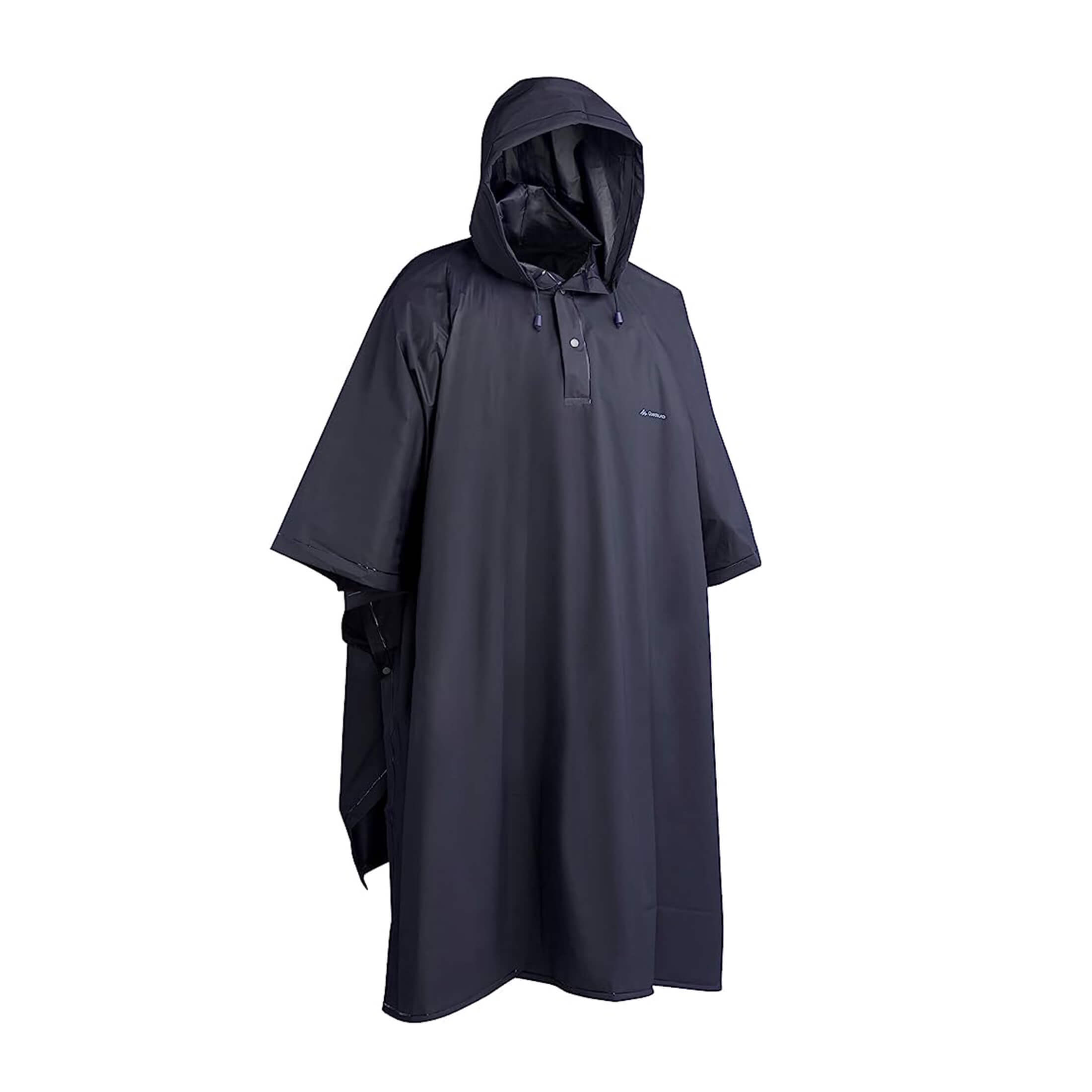
Ponchos vs rain jackets
Given their differences, it can be expected that ponchos and rain jackets have different advantages and disadvantages. It’s important to understand these strengths and weaknesses if your aim is to choose the option that best meets your needs.
Insulation
Neither ponchos nor rain jackets have insulation, but jackets, with their cuffed sleeves and drawcord hems, do a better job of trapping body heat. This can be more or less desirable depending on the conditions. In colder temps, especially where you also have wind, you’ll want these features to help you retain heat and stay warm. Jackets are usually a better layering option for the same reason – they are more effective at trapping air in insulating middle layers like a fleece pullover or puffy jacket.
Breathability and ventilation
Ponchos and rain jackets deal with moisture in very different ways. Whereas ponchos rely on their loose fit to aid ventilation and prevent sweatiness, jackets rely on the breathability of their fabrics to prevent excess moisture buildup. And this is where ponchos have one up on jackets. The fabrics used in waterproof jackets aren’t nearly as breathable as they are sometimes claimed to be, and if a jacket doesn’t have zippered vents to improve ventilation, the wearer can easily experience a buildup of sweat that leaves them cold and clammy.
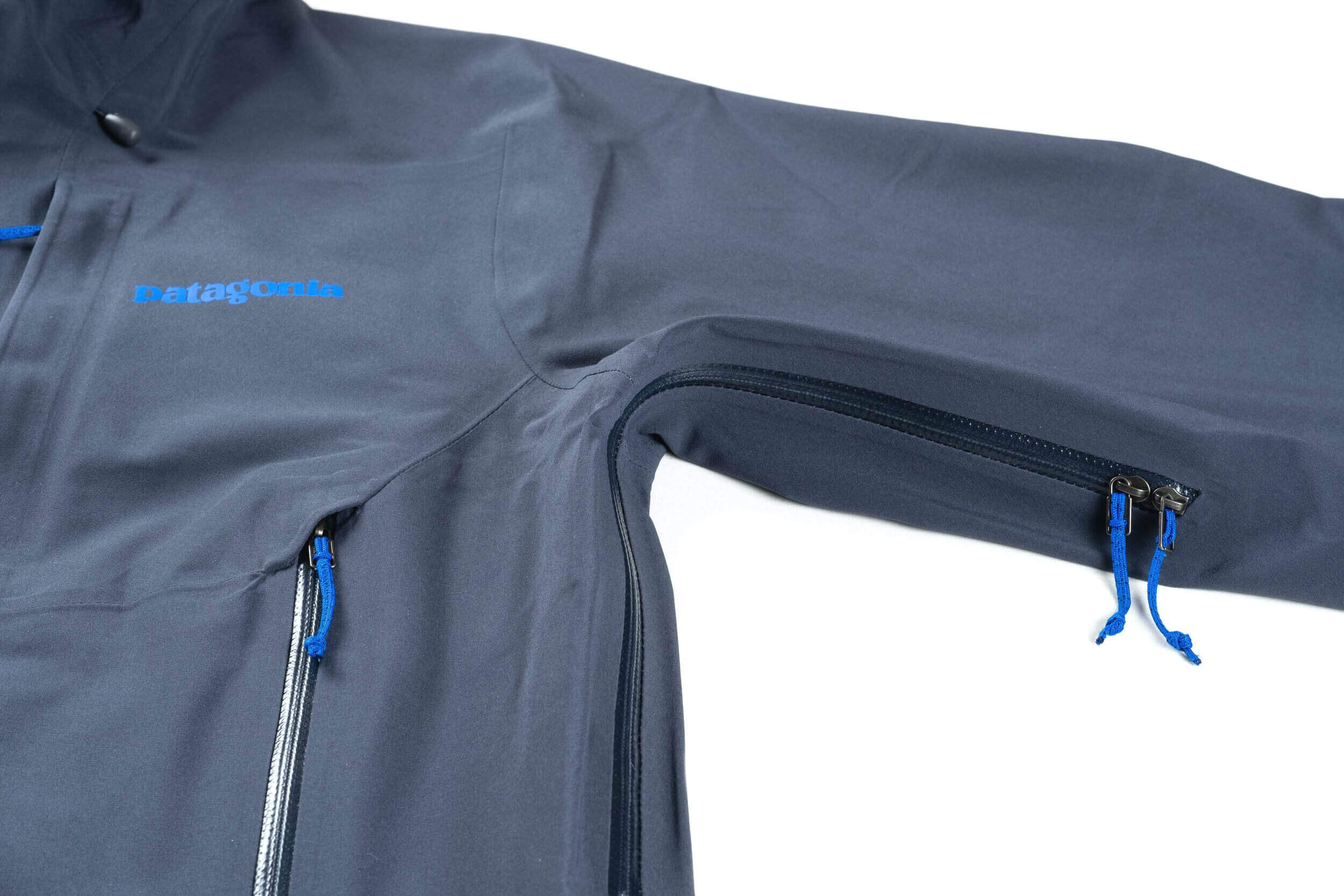
Wind resistance
With a slimmer fit and adjustable openings, rain jackets offer better protection from the elements in windy conditions. Whereas a hiker in a poncho has to hold her rainwear in place to prevent its sleeves from opening and letting in rain, the jacket-clad hiker can simply cinch her sleeves, hem and hood closed, and then carry on hiking. Besides exposing a hiker to rain, a poncho can also flap in high wind and slap itself against the wearer’s body. This alone can be irritating enough to make someone wish they had a jacket.
Snagability
If your hikes are going to take you through densely wooded areas, a jacket is a lot less likely to snag on branches, something that would happen frequently if you wore a loose-fitting poncho. One way to prevent this (if you still decided to use a poncho) is to pull in the sides of your poncho using a cord wrapped around your waist.
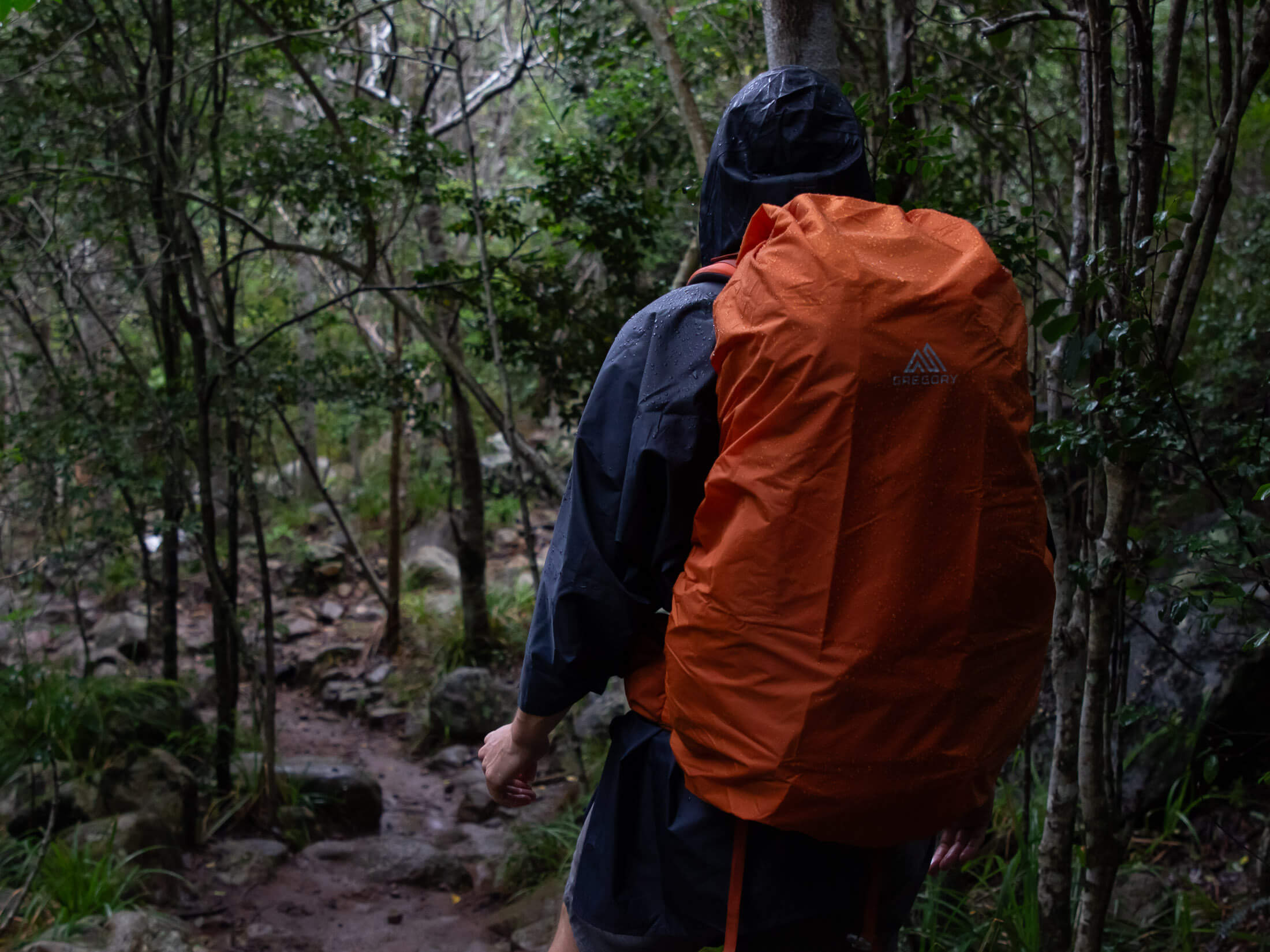
Durability
One of the most common criticisms of ponchos is that they are not nearly as durable as rain jackets, but that is only true of cheaper ponchos made of plastic. Although not as strong as Gore-Tex, polyester and ripstop nylon is not easily torn or cut, and Dyneema Composite Fabric (the material used in the construction of high-end ponchos) is extremely tough. The point is that you get what you pay for, and if you want a poncho that won’t tear or rip on off-trail excursions, you will have to pay a little bit more.
Coverage
All rain jackets have full-length sleeves, but the sleeves on ponchos vary from elbow-length to full-length. This has implications for your choice of base layer and insulating layers. If you buy a poncho that has sleeves any shorter than full length, you will have to ensure that you have base layers and insulating layers with sleeves just as short. If the sleeves on these layers are exposed to rain, they can act like wicks drawing moisture up and into other parts of these garments.
Fit and style
Because they are designed to fit the wearer properly, jackets just look better and are more likely to help you fit in when you’re in town. A poncho, while being very practical in many circumstances, will hang off you in folds of excess material and look as stylish as the upturned giant plastic bag that it actually is. Some people will have no trouble with this ‘look’. Others will be more self conscious. Note: when sizing a jacket, make sure that you are able to wear an insulating layer or two underneath it.

Weight
Since they don’t have zips, pockets, and other features typically only found on jackets, ponchos generally weigh less than jackets, but only just. Whereas ponchos range in weight from 6 to 12 ounces (170 - 340 g) depending on material, rain jackets typically weigh between 8 and 16 ounces (230 - 450 g). Personally, I wouldn’t let the 60-gram difference between a light poncho and light jacket sway my decision, but for obsessive ounce counters, it might be enough to tip the scales in favour of a poncho.
Storage
If you’re in the habit of storing small items in your pockets or simply want to be able to warm your hands in colder temps, a jacket is going to have a few advantages over a poncho, which typically won’t have pockets. The pockets on a rain jacket should have zips or storm flaps for keeping rain out.
Price
A decent polyester or nylon poncho costs somewhere between $35 and $70 while a high-end poncho made from DCF will set you back $250. Jackets, on the other hand, can range in price from $100 for a 2.5-layer rain shell to $450 for a Gore-Tex (3-layer) hard shell. The roughly $65 difference between a basic poncho and a basic rain jacket might be enough to steer a budget-minded consumer towards a poncho especially if he plans on using it only a few times.
| Poncho | Rain jacket | |
| Breathability and ventilation | A loose fit means good ventilation and optimum moisture management | Moisture management depends on breathability of fabric |
| Insulation | Does very little to retain heat | Draw cords, collars and adjustable sleeve cuffs help retain heat |
| Wind resistance | Excess material flaps around in wind | Performs better in windy conditions |
| Snagability | Loose folds can easily snag on branches when hiking through brush | A tighter fit means jackets are less likely to snag on branches |
| Durability | Durability varies with material. Thicker polyester fabrics and ripstop nylon are sufficiently strong. | Generally quite durable |
| Coverage | Sleeves vary from elbow length to full length. Must match the length of under layers | All rain jackets have full-length sleeves |
| Weight | On average slightly lighter | On average slightly heavier |
| Storage | Most don’t have pockets | Most have handwarmer pockets and some have zippered chest pockets |
| Fit and style | loose and bag-like | more form-fitting |
| Price | $35 to $70 for a polyester or nylon poncho. Up to $250 for a DCF poncho | Around $100 for a 2.5-layer rain shell. Up to $450 for a Gore-Tex hard shell |
When to wear what
As with most gear decisions, personal preference is important, but there are some situations in which a jacket just makes more sense than a poncho and vice versa.
Poncho
A poncho is a good option when ventilation is a priority, when you plan to hike on trails devoid of thick bush, and when you don’t expect much wind. Depending on your budget and the number of times you plan on hiking in potentially wet conditions, a poncho might also be a better option simply because it costs less.
- Ventilation is more important than all-weather performance
- You don’t expect a lot of wind
- You plan to hike on trails and avoid thick bush
- You are going to use it a few times
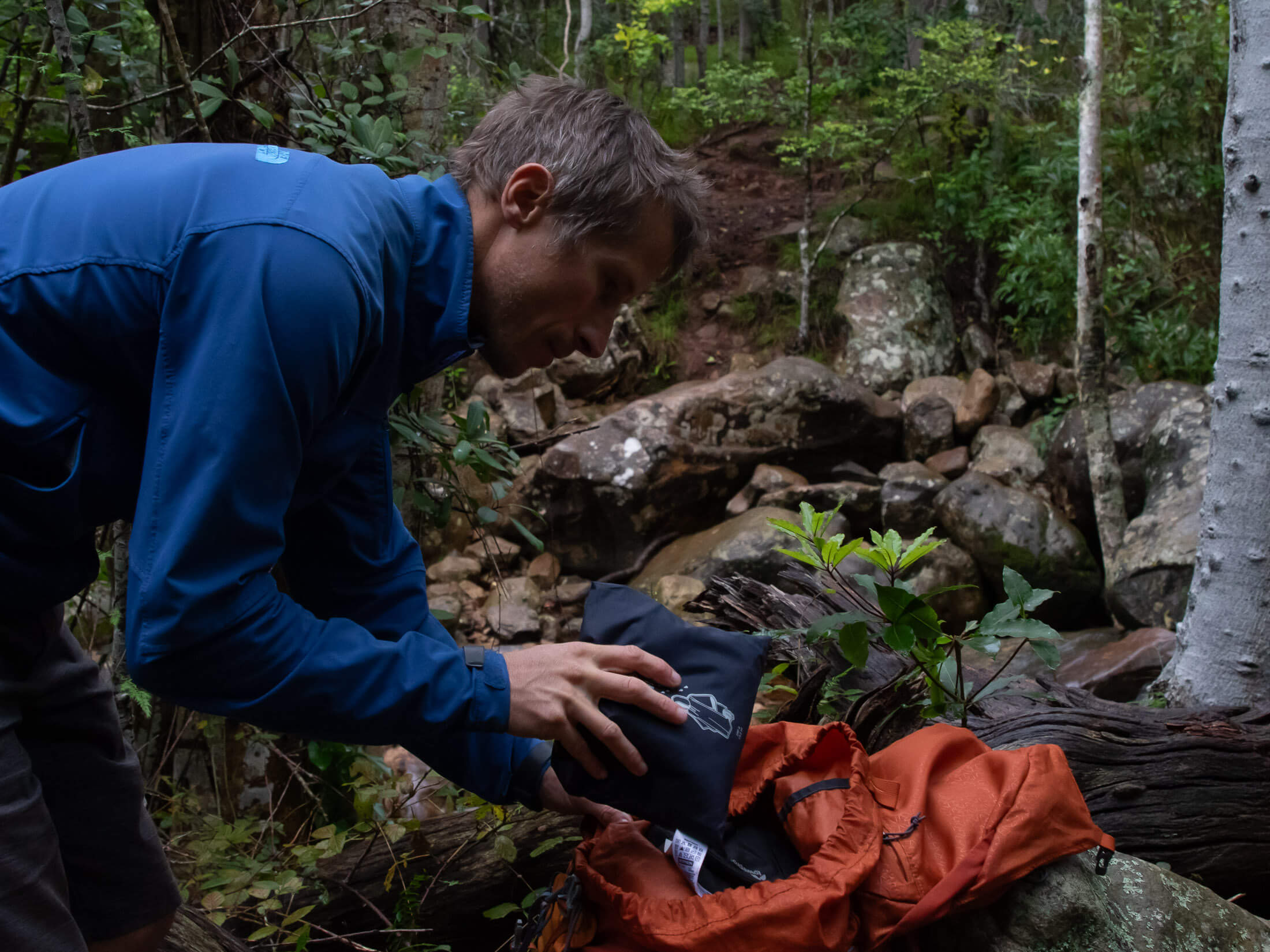
Rain jacket
A better all-weather option, a rain jacket makes more sense if you expect a combination of wind, rain, and cold. It will also be a better choice if you’re going to be doing any bushwacking or scrambling, and will look more stylish when you have to make trips into town. Lastly, you might just like the feeling of something that fits properly – doesn’t flap around you in folds of loose material – and has pockets to warm your hands in when it gets cold.
- You expect wind, rain and cold
- You’re going to do some scrambling or bushwacking
- You care about how you look and are going to spend time in town
Get more advice from this gearhead
You now have everything you need to know about the differences between ponchos and rain jackets. But don’t stop here. On this website you’ll find many more in-depth gear guides on everything from headlamps to backpacks as well as many more how-to articles. You can find these under the different sections in the categories menu, or, better yet, sign up for my newsletter to get all the latest from Trail & Crag delivered straight to your inbox.
